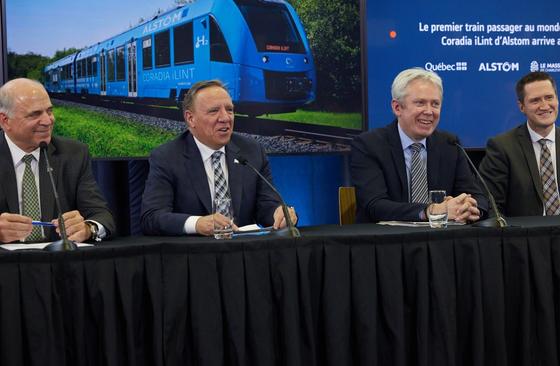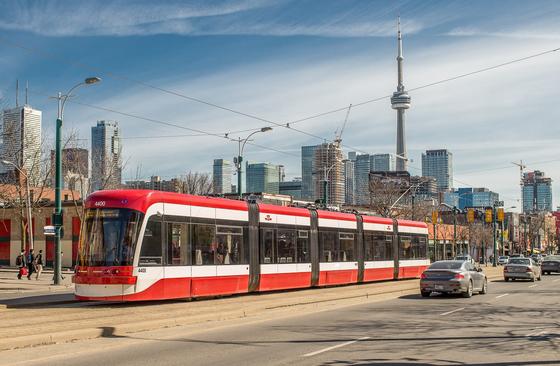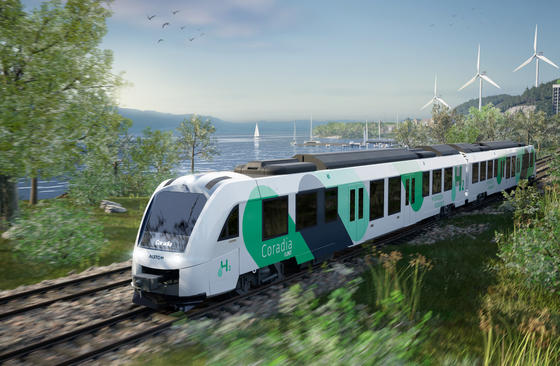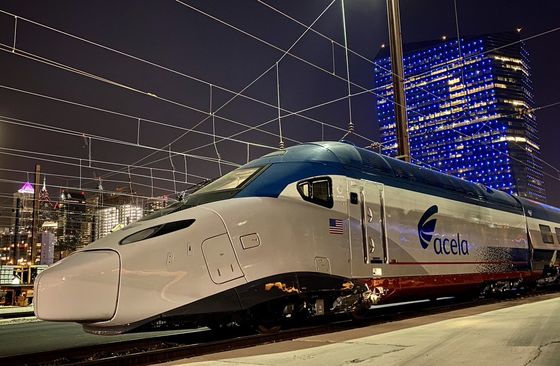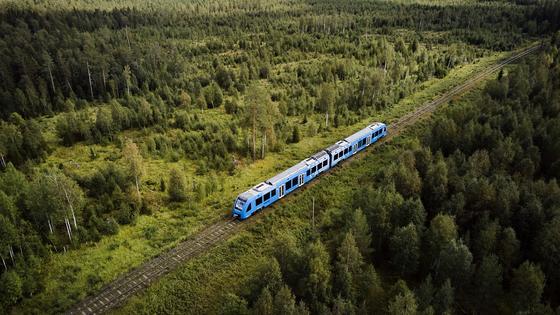
Green propulsion: The rail alternative to fight global warming
The situation is clear: the world is experiencing a climate emergency supported by scientific authorities[1] where reducing greenhouse gas emissions is critical to meet the 2015 Paris Agreement targets. North America is no exception and is looking for new ways to consume, work, eat or move. Across states, provinces and countries, the medium and long-distance movement of goods and passengers, dependent primarily on road transport and fossil fuels, needs a game-changer. In cities, the air quality deterioration coupled with car congestion is forcing a rethink of urban and suburban mobility to make cities more beautiful, better connected, greener and more livable.

The rail industry has a key role to play in this transition.
The rail industry has a key role to play in this transition. The train is social; it groups whereas the individual car separates. It is an effective and safe land use planning tool. It is environmentally friendly: on average, a passenger on a high-speed train emits 50 times less CO2/km than by taking a medium-haul flight; a freight train emits 14 times less CO2/km than a heavy truck[2] and of the 16.2 per cent of global greenhouse gas emissions from the transportation sector, 73.5% of these emissions come from road transportation[3]. The train has significant development potential.
Providing alternative solutions to fossil fuels and further developing the ecological performance of railway systems is the mission of Alstom’s innovation centre for the Americas. “The train is an environmentally-friendly solution by nature and is even more so thanks to electricity,” notes Éric Rondeau, director of the centre based in Saint-Bruno-de-Montarville, Quebec, which opened in June 2022. “Only one per cent of North American networks are electrified – 99 per cent are fossil fuel powered. We are working to make the railway even more ethical. It is a challenge, but the field of possibilities is immense.”
-
50x lessa passenger on a high-speed train emits 50 times less CO2/km than by taking a medium-haul flight
-
1%Only one per cent of North American networks are electrified
-
≈99%of which 99 per cent are fossil fuel powered
The electrification of rail networks is a challenge. Freight is a good example: electrifying thousands of kilometres is an economic impossibility when it comes to not only installation but also maintenance. North America has almost 30, 000 freight locomotives which represents an impressive potential market for decarbonisation, when you consider that all of them are diesel locomotives. “These are all locomotives whose traction systems we can convert to greener and more efficient alternatives,” explains Éric Rondeau. “Solutions exist, we seek we seek to adapt them to the North American market and its particular challenges. We're looking to innovate further. Electric propulsion is today the most virtuous. But if installing thousands of kilometres of catenaries is not viable, the question is which energy source can best power our electric trains? Hydrogen? Batteries? A combination of both?”
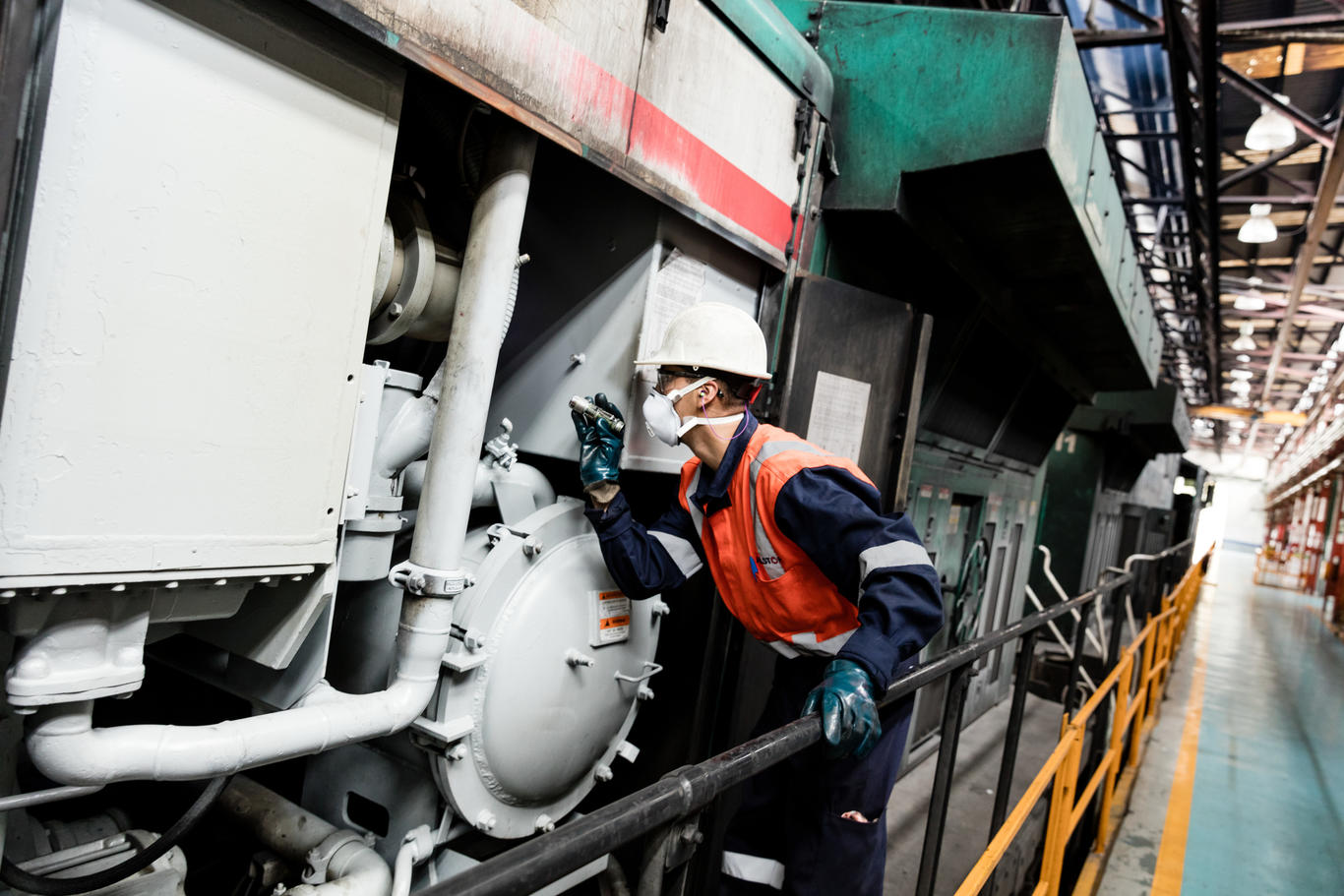
It’s hard to imagine a single solution. Alstom will define, with its customers, the best solution according to their needs and requirements: mission profile, track length, power and energy requirements, electrification projects in progress and in the future. Alstom, with its global innovation capacity and its many reference projects, is a leader in electric propulsion whether it is 100 per cent electric or uses batteries or fuel cells.
The company developed Coradia iLintTM, the first passenger train powered by a fuel cell. An electric train that creates electricity by combining hydrogen stored in tanks and oxygen naturally present in the air. The only emissions from this reaction are water vapour and condensed water On September 15, 2022, this low-noise, zero-emission train travelled the record distance of 1,175 kilometres without refuelling. In Germany, a first 100 per cent hydrogen line was launched with 14 Coradia iLint trains gradually replacing 15 diesel trains.
The Saint-Bruno innovation centre is working on a version adapted to the North American reality. First, it will take the form of a demonstration by bringing the Coradia iLint train to the Americas. On 2 February 2023, Alstom, in partnership with the Government of Quebec, Chemin de fer Charlevoix, Train de Charlevoix, Harnois Énergies and HTEC, announced a passenger service demonstration project for its hydrogen-powered train. During summer 2023, the Coradia iLint will carry passengers on the Réseau Charlevoix rail network, along the St. Lawrence River, between Parc de la Chute-Montmorency and Baie-St-Paul. The train will be powered by green hydrogen produced by Harnois Énergies at its Quebec City site.
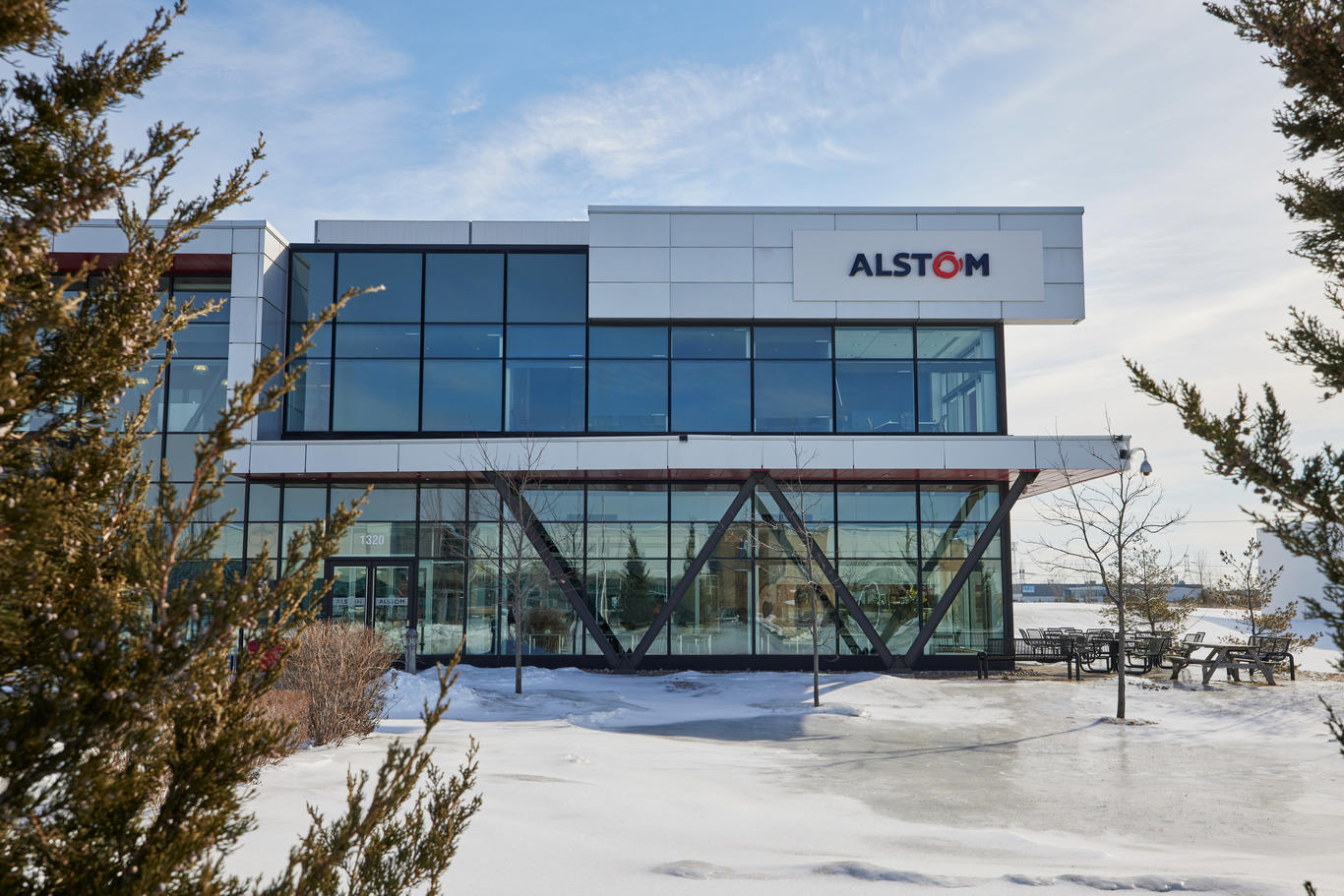
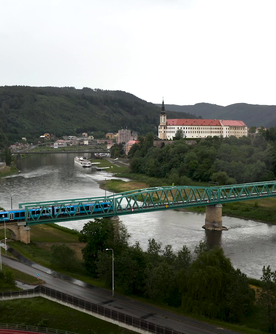
Alstom Coradia iLint – the world's 1st hydrogen powered passenger train
Read more
“We are working to make the railway even more virtuous. Solutions exist, we seek to adapt them to the North American market and its particular challenges.”
The province of Quebec will be the first jurisdiction in the Americas to run a train with zero direct emissions powered by green hydrogen, demonstrating its leadership in the transition to a low-carbon economy and the set-up of ecosystems dedicated to hydrogen. The operation of this train with passengers on board will allow Alstom and its partners to better assess the subsequent steps for the development of hydrogen propulsion technology and its penetration into the North American market. Éric Rondeau adds: “Hydrogen is an answer, we see great progress with batteries and we’re thinking about new platform ideas. We are also working to bridge the rail technology and cultural gap in the region.”
In Europe or Asia, using a passenger train has long been a habit. Less so in North America. For example, the Montreal-Toronto train route takes triple the time needed to go from Paris to Lyon in a French high-speed train for a similar distance. “Improving and decarbonising the rail offering will not happen overnight,” says Xavier Boisgontier, Green Strategy Director for Alstom in North America. “We seek to support the transport authorities and make it clear that, in the long term, the transition from polluting solutions to green, smart and ever more efficient alternatives is beneficial and makes modal transfer to rail possible not only for their reputation and social responsibility but also economically. By assessing the total cost of ownership of a rail system and improving its performance to encourage its use, we are demonstrating that the initial investment is worth it.” In Canada, Metrolinx has chosen the GO Expansion program, which not only aims to make the network smarter with state-of-the-art signalling, but more importantly to transition from diesel to electric. So why not duplicate these projects?

"We seek to support the transport authorities and make it clear that, in the long term, the transition from polluting solutions to green, smart and ever more efficient alternatives is beneficial and makes modal transfer to rail possible.”
Rail is a complementary and future solution
Moving a train with hydrogen is a feat in itself, but developing the ecosystem around it is essential. How do you power a train with clean energy? Where do you place charging stations? What partnerships should be established to produce green hydrogen that is not produced by chemical-processes? How can we help the authorities move towards new industrial, operational or business models?
Alstom suggests three complementary approaches.
The first is to bring together the key players in the energy transition in an innovation zone to work together – researchers, experts, industrialists, academics, institutions – to develop effective models adapted to the different environments. This is what is happening in Quebec with the green hydrogen plan initiated by the government and the establishment of a cluster in the Trois-Rivières region.
The second axis aims to accompany transport authorities from A to Z, in an approach called “turnkey” in the rail industry that goes far beyond the supply of rolling stock. Identify and understand a need, conduct empirical and comparative studies with other networks, design the system taking into account economic realities, mobility and ridership, and build, commission, operate and maintain the network over the long term. This approach aims to reduce the risks associated with integrating the multitude of subsystems required for a rail system. In Canada, Alstom’s participation in the Réseau express métropolitain (REM) in Montreal is a good illustration. Alstom, together with its client CDPQ Infra, designed the system adapted to CDPQ Infra’s needs and, in addition to providing the automatic light metro system and 30 years of operation and maintenance, is ensuring the integration testing of all the subsystems, including those provided by the civil engineers of the project.
“A change of this magnitude will not and cannot happen without the will and support of governments and authorities,” explains Xavier Boisgontier. “Any change implies an adoption of a new model and requires two macroscopic actions. First, testing new platforms to bring them to maturity and demonstrate their technical, industrial, economic and social viability while developing the local ecosystem. Second, promoting and enhancing this change by providing access to technology by providing green incentives to change the model and enable transport operators and agencies to source more responsibly.”
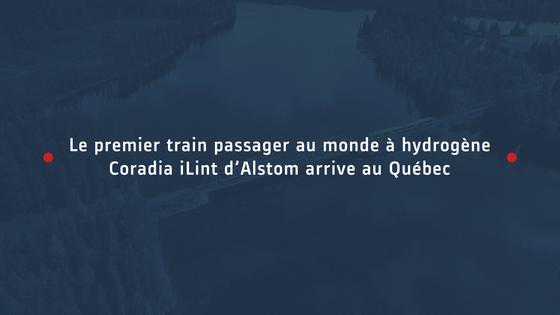

Alstom is a commited partner
The rail industry – passenger transportation, automatic airport shuttles and freight – can play an even greater role in the fight against global warming thanks to its low carbon footprint. It can be even more efficient thanks to green propulsion and to increasingly intelligent solutions. The efforts of Canada and the United States to encourage the use of individual electric cars are extremely positive and must be continued. But independent reports show that this will not be enough to meet carbon emissions targets by 2050. The current saturation of urban road transport networks and airport facilities in major centres requires the development of other modes of transport than cars and aircraft. Rail is a complementary and future solution. Building on its innovative capabilities, with its facilities and expertise from the design and production of green and intelligent rail systems to their operation, maintenance, modernisation and upgrading, Alstom is committed to helping American mobility players involved in this adventure. An adventure that must define the ways of moving across the continent for the next hundred years.
This article first appeared in the ‘Routes et transports’ magazine published by the Association Québécoise des transports publics (AQTr) in the fall of 2022 (French only). It was written by Adrien Vernhes, Communications Manager for Alstom in the Americas region. The article is reproduced here in a white paper format with the kind permission of the AQTr.
[3] OurWorldinData, Climate Watch, The World Resources Institute.
